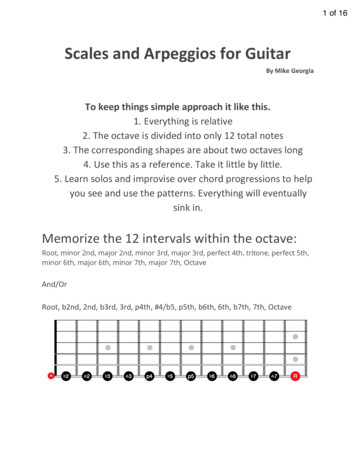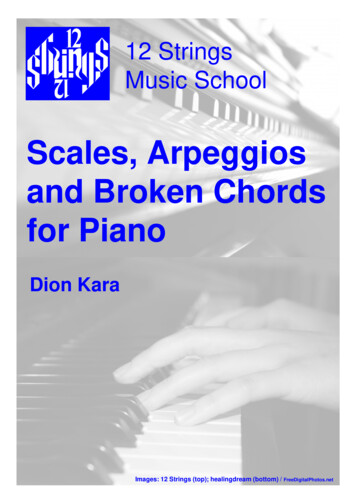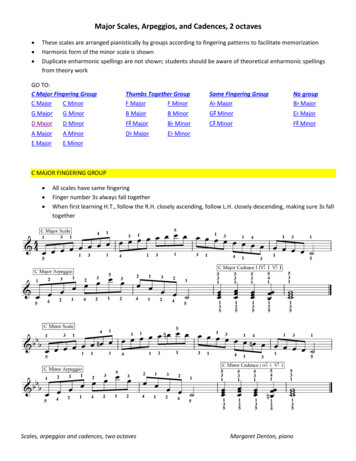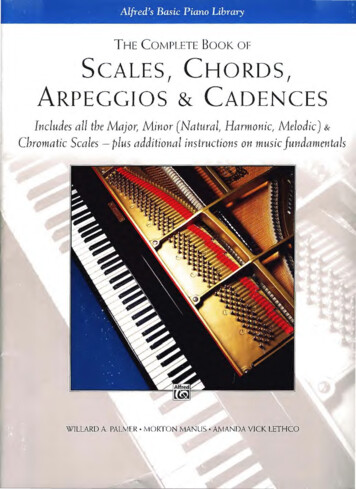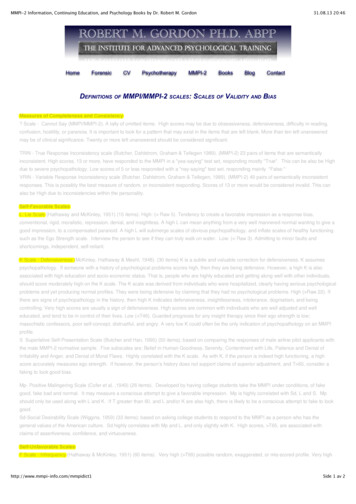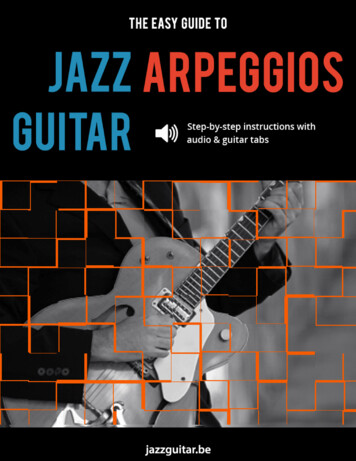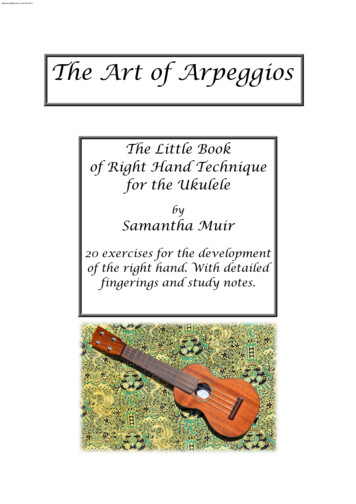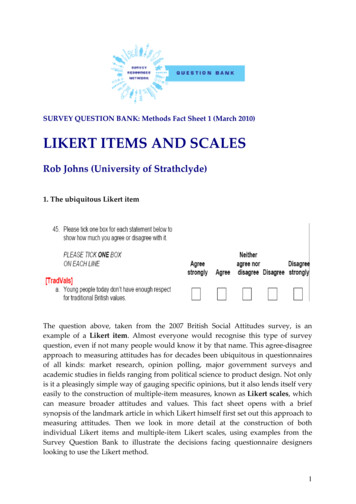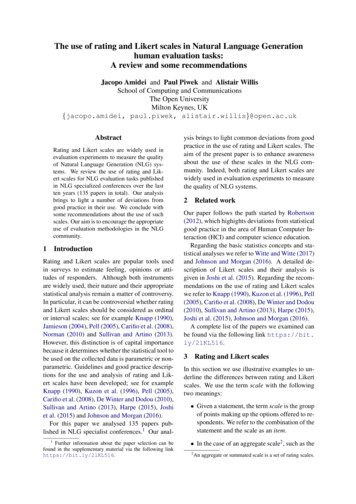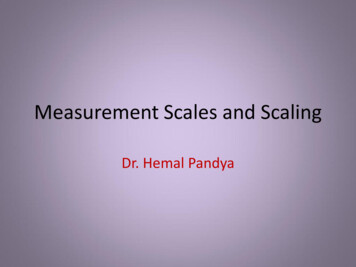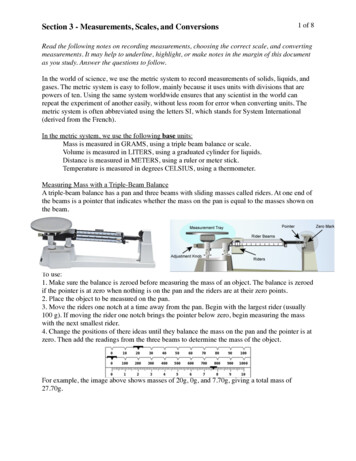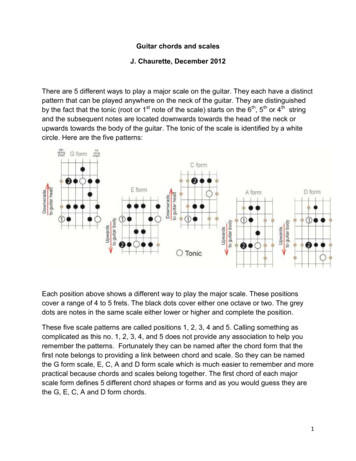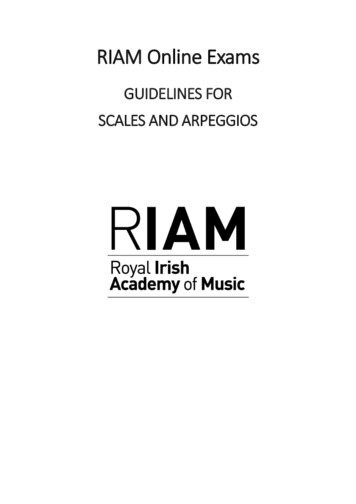
Transcription
RIAM Online ExamsGUIDELINES FORSCALES AND ARPEGGIOS
RIAM ONLINE EXAMSGUIDELINES FORSCALES AND ARPEGGIOSSECTIONPAGE NUMBERGuidelines For Scales And Arpeggios . . . . . . . . . . 3Classical Singing And Music Theatre . . . . . . . . . . . 4Piano . . . . . . . . . . . . . . . . . . . . . . . . . . . . . . . . . . . . . 5Violin . . . . . . . . . . . . . . . . . . . . . . . . . . . . . . . . . . . . . 7Viola . . . . . . . . . . . . . . . . . . . . . . . . . . . . . . . . . . . . . 10Cello . . . . . . . . . . . . . . . . . . . . . . . . . . . . . . . . . . . . . 12Recorder . . . . . . . . . . . . . . . . . . . . . . . . . . . . . . . . . . 14Flute . . . . . . . . . . . . . . . . . . . . . . . . . . . . . . . . . . . . . 16Clarinet . . . . . . . . . . . . . . . . . . . . . . . . . . . . . . . . . . . 18Saxophone . . . . . . . . . . . . . . . . . . . . . . . . . . . . . . . . 20Trumpet . . . . . . . . . . . . . . . . . . . . . . . . . . . . . . . . . . 22Irish Harp . . . . . . . . . . . . . . . . . . . . . . . . . . . . . . . . . 24Guitar . . . . . . . . . . . . . . . . . . . . . . . . . . . . . . . . . . . . 26Baritone & Euphonium . . . . . . . . . . . . . . . . . . . . . . 28RIAM Guidelines For Scales & Arpeggios For Online Exams2
RIAM ONLINE EXAMSGuidelines For Scales And Arpeggios For Recorded ExamsThe following document offers a guide as to what will be expected in your recorded examperformance. The requirements for different instruments will vary greatly, but a scale and arpeggiofrom each section should be included in the exam presentation. Candidates should always refer tothe syllabus requirements for your specific instrument / grade as necessary.Separate lists are available for the following instruments: Piano, Violin, Cello, Irish Harp, Recorder,Flute, Clarinet, Saxophone and Trumpet.Classical Singing and Music Theatre Exams.Due to the limited number of scales prescribed in the syllabus all scales and exercises for each gradewill be expected in exam performance.Bowed String Instruments: candidates should demonstrate a mixture of slurred and separatebowing (in line with the syllabus requirements for your specific grade).Woodwind and Brass Instruments: candidates should demonstrate a mixture of tongued andslurred articulation (in line with the syllabus requirements for your specific grade).PRELIMINARY AND PRIMARY:Scales: Candidates to present 2 scales.Arpeggios: Candidates to present 2 arpeggios.GRADES 1–2Scales: Candidates to present no more than 4 scales. These should include Major and Minor.Arpeggios: Candidates to present 2 arpeggios, Major and Minor in accordance with syllabusrequirements.GRADES 3–5:Scales: Candidates to present no more than 6 scales which should include Major, Minor, Chromaticand Whole Tone in accordance with syllabus requirements for each instrument.Arpeggios: Candidates to present 4 arpeggios to include Major and Minor. Where the syllabusspecifies Dominant 7th and Diminished 7th these should also be included.GRADES 6–7:Scales: Candidates to present no more than 8 scales which should include Major and Minor(harmonic and melodic where applicable), Chromatic, Whole Tone in accordance with syllabusrequirements for each specific instrument.Arpeggios: Candidates to present no more than 6 Arpeggios to include Major and Minor, Dominant7th and Diminished 7th where applicable as per syllabus requirements.GRADE 8 AND SENIOR CERTIFICATE:Scales: Candidates to present no more than 8 scales. These should include Major and Minor(harmonic and melodic where applicable), Chromatic and Whole Tone as per syllabus requirements.Arpeggios: No more than 8. These should include Major and Minor, Dominant 7th, Diminished 7tharpeggios where applicable as per syllabus requirements.Classical Singing and Music Theatre Exams.Due to the limited number of scales prescribed in the syllabus all scales and exercises for each gradewill be expected in exam performance.RIAM Guidelines For Scales & Arpeggios For Online Exams3
RIAM ONLINE EXAMSClassical Singing And Music Theatre ExamsDue to the limited number of scales prescribed in the syllabus all scales and exercises for each gradewill be expected in exam performance.The following document offers a guide as to what will be expected in your recorded examperformance. The requirements for different instruments will vary greatly, but a scale and arpeggiofrom each section should be included in the exam presentation. Candidates should always refer tothe syllabus requirements for your specific instrument / grade as necessary.Bowed String Instruments: candidates should demonstrate a mixture of slurred and separate bowing(in line with the syllabus requirements for your specific grade).Woodwind and Brass Instruments: candidates should demonstrate a mixture of tongued and slurredarticulation (in line with the syllabus requirements for your specific grade).For Piano, Violin, Cello, Irish Harp, Guitar, Recorder, Flute, Clarinet, Saxophone, Trumpet, Baritone &Euphonium please follow the specific list of Scales/Arpeggios listed.PRELIMINARY AND PRIMARY:Scales: Candidates to present 2 scales.Arpeggios: Candidates to present 2 arpeggios.GRADES 1–2Scales: Candidates to present no more than 4 scales. These should include Major and Minor.Arpeggios: Candidates to present 2 arpeggios, Major and Minor in accordance with syllabusrequirements.GRADES 3–5:Scales: Candidates to present no more than 6 scales which should include Major, Minor, Chromaticand Whole Tone in accordance with syllabus requirements for each instrument.Arpeggios: Candidates to present 4 arpeggios to include Major and Minor. Where the syllabusspecifies Dominant 7th and Diminished 7th these should also be included.GRADES 6–7:Scales: Candidates to present no more than 8 scales which should include Major and Minor(harmonic and melodic where applicable), Chromatic, Whole Tone in accordance with syllabusrequirements for each specific instrument.Arpeggios: Candidates to present no more than 6 Arpeggios to include Major and Minor, Dominant7th and Diminished 7th where applicable as per syllabus requirements.GRADE 8 AND SENIOR CERTIFICATE:Scales: Candidates to present no more than 8 scales. These should include Major and Minor(harmonic and melodic where applicable), Chromatic and Whole Tone as per syllabus requirements.Arpeggios: No more than 8. These should include Major and Minor, Dominant 7th, Diminished 7tharpeggios where applicable as per syllabus requirements.RIAM Guidelines For Scales & Arpeggios For Online Exams4
RIAM ONLINE EXAMSSuggested Scales and Arpeggios for PianoElementary Grade:Scale of C Major, hands togetherScale of G Major, separate hands and togetherContrary Motion of CPreliminary Grade:3 scales, similar motion (1 separate hands and 2 hands together)Contrary Motion of CArpeggio of C (right and left hands separately)Primary Grade:3 scales, similar motion (1 separate hands and 2 hands together)1 Contrary Motion Scale2 Arpeggios (1 for right hand, 1 for left hand)Grade One:3 Major Scales (1 separate hands and 2 hands together)1 Minor Scale (hands together)1 Contrary Motion scale2 or more Arpeggios (to include 1 for right hand, 1 for left hand)Grade Two:1 Major Scale, 2 octaves1 Major Scale, 1 octave2 Minor Scales, 1 octave (option to play 1 separate hands)1 Contrary Motion scale4 Arpeggios, 2 Major and 2 Minor, all hands togetherGrade Three:1 Major Scale, 2 octaves2 Major Scales, 1 octave (option to play 1 separate hands)2 Minor Scales, 1 octave1 Chromatic Scale, 1 octave1 Contrary Motion Scale, 1 octave4 Arpeggios: 1 Major, 2 octaves/ 1 Major, 1 octave / 2 Minor, 1 octaveGrade Four - all hands together:2 Major Scales, 2 octaves2 Minor Scales, 1 octave1 Chromatic Scale, 1 octave2 Contrary Motion Scales, 1 octaveArpeggios: 32 Major (2 octaves) /1 Minor (1 octave)RIAM Guidelines For Scales & Arpeggios For Online Exams5
RIAM ONLINE EXAMSScales and Arpeggios for PianoGrade Five, all hands together unless otherwise specified:1 Major Scale, 3 octaves2 Minor Scales (1 harmonic and 1 melodic), 2 octaves1 Chromatic Scale, 2 octaves1 Wrist Staccato Scale (either hand)1 Major Contrary Motion, 2 octaves1 Minor Contrary Motion, 1 octave4 Arpeggios: Major - Root Position and 1st Inversion, Minor - Root Position and 1st Inversion.Grade Six, all hands together unless otherwise specified:2 Major Scales, 4 octaves2 Minor Scales (1 harmonic and 1 melodic), 3 octaves1 Chromatic, 3 octaves1 Wrist Staccato (either hand)1 Major Contrary Motion, 2 octaves1 Minor Contrary Motion, 1 octave4 Arpeggios: Major – Root Position and 1st Inversion, Minor – Root Position and 1st Inversion.Grade Seven, all hands together unless otherwise specified:2 Major Scales, 4 octaves2 Minor Scales (1 harmonic and 1 melodic), 4 octaves3 Contrary Motion (1 Major, 1 Minor, 1 Chromatic)1 Double Octave Scale (either hand)2 Major Arpeggios (Root Position and 1st Inversion)2 Minor Arpeggios (Root Position and 1st Inversion)1 Diminished 7thGrade Eight, all hands together:1 Major Scale, 4 octaves2 Minor Scales (1 harmonic and 1 melodic), 4 octaves2 Hands a Third Apart (1 Major and 1 Minor), 4 octaves1 Chromatic Scale, 4 octaves1 Double Octave Scale, 2 octaves3 Contrary Motion (1 Major, 1 Minor, 1 Chromatic)3 Major Arpeggios (Root Position, 1st Inversion and 2nd Inversion)3 Minor Arpeggios (Root Position, 1st Inversion and 2nd Inversion)1 Dominant 7thSenior Certificate, all hands together unless otherwise specified:1 Major Scale, 4 octaves2 Minor Scales (1 harmonic and 1 melodic), 4 octaves1 Staccato Scale, 3 octaves2 Scales a Sixth Apart (1 Major and 1 Minor), 4 octavesDouble Thirds (either hand)1 Double Octave Scale, Minor, 2 octaves2 Contrary Motion Scales (choose between Major, Minor, Chromatic)3 Major Arpeggios (Root Position, 1st Inversion and 2nd Inversion)3 Minor Arpeggios (Root Position, 1st Inversion and 2nd Inversion)1 Dominant 7th1 Diminished 7thRIAM Guidelines For Scales & Arpeggios For Online Exams6
RIAM ONLINE EXAMSSuggested Scales and Arpeggios for ViolinPreliminary (all separate bows):1 Major Scale, 1 octave (begin on open string)1 Major Arpeggio, 1 octavePrimary (all separate bows):2 Major Scales, 1 octave (begin on open strings)2 Major Arpeggios, 1 octaveGrade One (all separate bows):1 Major Scale, 1 octave1 Major Scale, 2 octaves1 Minor Scale, 1 octave1 Major Arpeggio, 2 octaves1 Minor Arpeggio, 1 octaveGrade Two (combination of separate and slurred bows):1 Major Scale, 1 octave1 Major Scale, 2 octaves2 Minor Scales, 1 octave1 Major Arpeggio, 1octave1 Major Arpeggio, 2 octaves1 Minor Arpeggio, 1 octaveGrade Three (combination of separate and slurred bows):1 Major Scale, 1 octave1 Major Scale, 2 octaves1 Minor Scale, 1 octave1 Minor Scale, 2 octaves1 Chromatic Scale, 1 octave1 Major Arpeggio, 2 octaves1 Major Arpeggio, 1 octave1 Minor Arpeggio, 1 or 2 octaves1 Dominant 7thGrade Four (combination of separate and slurred bows):2 Major Scales, 2 octaves2 Minor Scales, 2 octaves1 Chromatic Scale, 1 octave1 Major Arpeggio, 2 octaves1 Minor Arpeggio, 2 octaves1 Dominant 7th, 1 octaveRIAM Guidelines For Scales & Arpeggios For Online Exams7
RIAM ONLINE EXAMSScales and Arpeggios for ViolinGrade Five (combination of separate and slurred bows):1 Major Scale, 2 octaves1 Major Scale, 3 octaves1 Minor Scale, 2 octaves1 Minor Scale, 3 octaves1 Chromatic Scale, 2 octaves1 Major Arpeggio, 3 octaves1 Major Arpeggio, 2 octaves1 Minor Arpeggio, 2 or 3 octaves1 Dominant 7th, 2 octaves1 Diminished 7th, 1 octaveGrade Six (combination of separate and slurred bows):1 Major Scale, 2 octaves1 Major Scale, 3 octaves2 Minor Scales (1 harmonic and 1 melodic), 2 octaves1 Chromatic Scale, 2 octaves1 Major Arpeggio, 2 octaves1 Minor Arpeggio, 2 octaves1 Minor Arpeggio, 3 octaves1 Dominant 7th, 2 octaves1 Diminished 7th, 2 octavesDouble Stops in Sixths, 1 octaveGrade Seven (combination of separate and slurred bows):1 Major Scale, 2 octaves1 Major Scale, 3 octaves2 Minor Scales, (1 harmonic and 1 melodic), 3 octaves1 Chromatic Scale, 2 octaves1 Major Arpeggio, 2 octaves1 Major Arpeggio, 3 octaves1 Minor Arpeggio, 2 octaves1 Dominant 7th, 2 octaves1 Diminished 7th, 3 octavesDouble Stops in SixthsDouble Stops in OctavesGrade Eight (combination of separate and slurred bows):2 Major Scales, 3 octaves2 Minor Scales (1 harmonic and 1 melodic), 3 octaves1 Chromatic, 3 octaves2 Major Arpeggios, 3 octaves2 Minor Arpeggios, 3 octaves1 Dominant 7th, 3 octaves1 Diminished 7th, 3 octavesDouble Stops in ThirdsDouble Stops in SixthsDouble Stops in Octaves (harmonic or melodic minor)RIAM Guidelines For Scales & Arpeggios For Online Exams8
RIAM ONLINE EXAMSScales and Arpeggios for ViolinSenior Certificate (combination of separate and slurred bows):2 Major Scales, 3 octaves2 Minor Scales (1 harmonic and 1 melodic), 3 octaves1 Chromatic, 3 octaves2 Major Arpeggios, 3 octaves2 Minor Arpeggios, 3 octaves1 Dominant 7th, 3 octaves1 Diminished 7th, 3 octavesDouble Stops in ThirdsDouble Stops in SixthsDouble Stops in Octaves (harmonic and melodic minor)RIAM Guidelines For Scales & Arpeggios For Online Exams9
RIAM ONLINE EXAMSSuggested Scales and Arpeggios for ViolaPrimary Grade: (all separate bows)2 Major Scales, 1 octave1 Minor Scale, 1 octave2 Arpeggios (1 Major and 1 Minor), 1 octaveGrade One: (combination of separate and slurred bows)1 Major Scale, 1 octave1 Major Scale, 2 octaves1 Minor Scale, 1 octave1 Major Arpeggios, 2 octaves2 Minor Arpeggios, 1 octaveGrade Two: (combination of separate and slurred bows)1 Major Scale, 1 octave1 Major Scale, 2 octaves2 Minor Scales, 1 octave1 Major Arpeggio, 1 octave1 Major Arpeggio, 2 octaves1 Minor Arpeggio, 1 octaveGrade Three: (combination of separate and slurred bows)1 Major Scale, 1 octave1 Major Scale, 2 octaves1 Minor Scale, 1 octave1 Minor Scale, 2 octaves1 Chromatic Scale, 1 octave2 Arpeggios (1 Major and 1 Minor), 2 octaves1 Dominant 7th, 1 octave1 Diminished 7th, 1 octaveGrade Four: (combination of separate and slurred bows)2 Major Scales, 2 oc
Scales and Arpeggios for Piano Grade Five, all hands together unless otherwise specified: 1 Major Scale, 3 octaves 2 Minor Scales (1 harmonic and 1 melodic), 2 octaves 1 Chromatic Scale, 2 octaves 1 Wrist Staccato Scale (either hand) 1 Major Contrary Motion, 2 octaves 1 Minor Contrary Motion, 1 octave 4 Arpeggios: Major - Root Position and 1st Inversion, Minor - Root Position and 1st Inversion .
